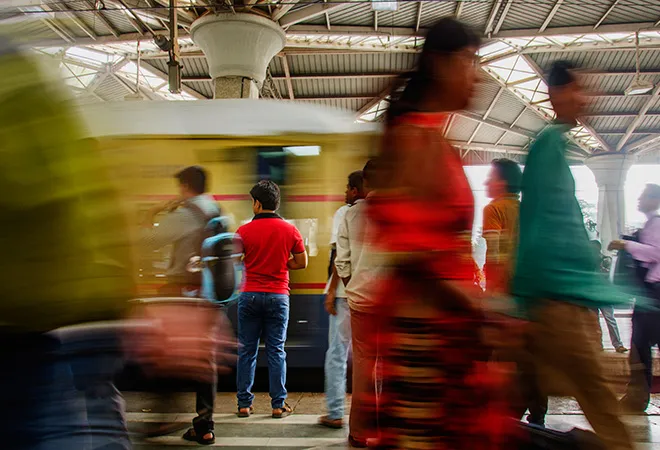-
CENTRES
Progammes & Centres
Location
Key proposals unveiled in this budget are primarily aimed at rural communities and the urban middle classes.

Image Source: Puneet Vikram Singh/Getty
Good politics often does not make for good economics. The two rarely go together. But smart politics can be coupled with smart economics. The NDA Government led by Prime Minister Narendra Modi demonstrated this on Friday, stealing a march over the opposition with less than 100 days left for the next general election.
When the Government announced it would present a Budget and not the customary election year ‘Vote on Account’, it was evident that Modi would use the opportunity to reach out to disaffected blocks of voters. He could have done this through the BJP’s election manifesto too. But that would have been perceived as his party’s promises versus those of the opposition, specially the Congress. Drafting welfare measures into this year’s budget proposals makes them firm commitments that can only be enhanced and not reduced.
It is in this context that we should see the key proposals unveiled in this budget. They are primarily aimed at rural communities and the urban middle classes. Also impacted are senior citizens (the pensioners) and diverse communities defined by caste identities in electorally crucial Hindi belt States. For good measure, Modi has also taken care to assuage the BJP’s core constituency via the Kamdhenu scheme for bovine welfare.
Drafting welfare measures into this year’s budget proposals makes them firm commitments that can only be enhanced and not reduced.
Instead of declaring a fiscally crippling farm loan waiver or guaranteed income by way of dole, Modi has opted for providing an income support of Rs 6,000 per year to small farmers who own less than 2 hectares of land. The payments are to be implemented with retrospective effect from December 2018. This will be money paid directly into their Jan Dhan accounts and over and above the other benefits they receive. Spending a fraction of this money on the notional premium that has been set for a new mega pension scheme would fetch beneficiaries Rs 3000 per month after the age of 60. Add to this up to 5 per cent interest subvention on farmers’ loans at times of natural calamities.
The income tax rebate for those earning up to Rs 5 lakh will benefit more than 40 per cent of taxpayers. If smart investments were to be factored in, those earning up to Rs 7.5 lakh per year (some experts are pegging it at Rs 8.5 lakh) will now be exempted from paying taxes. Introducing immediate income tax refunds, removing human interface in tax scrutinies, doing away with notional tax on rent, etc, add heft to the push to win over the support of the middle classes. On the face of it raising the threshold for TDS on interest earned from savings may not appear a big move, but for most pensioners it is a substantial administrative relief.
On the face of it raising the threshold for TDS on interest earned from savings may not appear a big move, but for most pensioners it is a substantial administrative relief.
The third clutch of measures are directed at electorally important communities. The Scheduled Castes and Scheduled Tribes will be beneficiaries of enhanced spending on welfare programmes meant for them. Communities dependent on animal husbandry and fishing will gain from the extension of Kisan Credit Cards to those involved in these professions that are linked to caste identities.
All this and more signals the NDA’s, or rather the BJP’s , attempt to brazen out the charge that it has failed to generate jobs. Both the Government and the party refuse to even consider that a jobs crisis is looming large if not already a reality. Several references were made by Finance Minister Piyush Goyal to MSMEs and the need to get them going again. A smart politician, he has not ventured into the treacherous zone of absolute numbers of jobs that are at stake.
That, however, is not the central theme of the budget. This budget is aimed at reaching out and smoothening ruffled feathers. The worst off among the farmers, the angst-ridden middle classes who increasingly feel they are being fleeced, and other backward classes, Scheduled Castes and Scheduled Tribes in states that elect the largest number of MPs.
This budget is aimed at reaching out and smoothening ruffled feathers. The worst off among the farmers, the angst-ridden middle classes who increasingly feel they are being fleeced, and other backward classes, Scheduled Castes and Scheduled Tribes in states that elect the largest number of MPs.
Governments are known to be treacly sweet while dealing with farmers. Governments are also known for being cynical and abrasive while dealing with the middle classes, putting them on a perpetual guilt trip. This is the first time that a Government has actually been nice to the middle classes, praising them for the taxes they pay and the contribution they make to nation-building. This by itself should fetch political returns.
The opposition has predictably responded by describing the proposals as a ‘political budget’ while accusing the Government of pandering to voters. If the opposition had expected otherwise, more the fool its leaders. Modi has played smart. Whether it will fetch votes for him this summer remains to be seen. If Modi retains office and power, his giveaways will not cost a lot, marginally pushing the fiscal deficit from 3.3 per cent to 3.4 per cent. With GST collections on the upswing and increasing tax compliance, that could be overcome.
The opposition, namely the Congress, can only up the stakes and promise more than what Modi has committed himself to. So, for argument’s sake, even if the BJP were to lose the election, forget excising what has been committed by Modi on Friday from its agenda, it would have to enhance the scope and spending. The bill will be the opposition's to pay, not Modi’s.
That's what makes the budget both smart politics and smart economics.
The views expressed above belong to the author(s). ORF research and analyses now available on Telegram! Click here to access our curated content — blogs, longforms and interviews.

Kanchan Gupta was a Distinguished Fellow at ORF. His work focuses on Indias political economy. His areas of interest are domestic politics and the Middle ...
Read More +